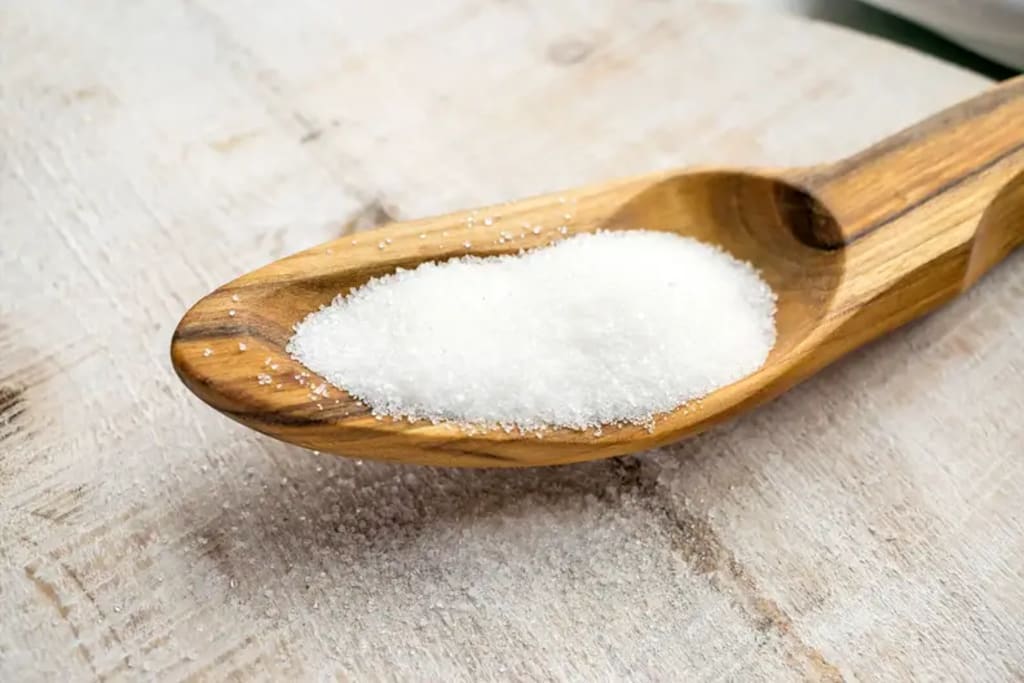The Sweet Future
Scientists Unveil the Secret to Near-Perfect Sugar Substitutes

In the quest for healthier dietary options, researchers are making significant strides in the realm of sugar substitutes. Their groundbreaking discovery involves the use of mineral salt blends to transform noncaloric sweeteners into delectable alternatives that closely mimic the taste and mouthfeel of real sugar. This innovation not only reduces the lingering sweetness but also enhances the overall sensory experience of low- and zero-calorie beverages and foods.
While the desire for noncaloric replacements for sugar and high fructose corn syrup is clear, finding the perfect solution has proven elusive. Some existing substitute options tend to leave an enduring sweet taste in the mouth while failing to replicate the satisfying texture of sugar, leaving consumers dissatisfied.
However, a recent study, published in the esteemed Journal of Agricultural and Food Chemistry, sheds light on a promising breakthrough. The research suggests that by incorporating carefully balanced combinations of nutritionally valuable mineral salts, scientists can elevate the similarity of noncaloric sweeteners to natural sugar. Taste testers have hailed this approach for its ability to transform drinks with minimal or zero calories into enjoyable and remarkably sweet experiences.
Sugar substitutes have become staples in various products, from sodas to baked goods and frozen desserts, offering consumers lower-calorie and low-sugar alternatives. Yet, many natural or synthetic noncaloric sweeteners, including stevia and aspartame, tend to exhibit delayed sweetness that lingers long after consumption.
Moreover, these substitutes often lack the satisfying mouthfeel characteristic of real sugar. In prior research, Grant DuBois and his team discovered that sodium chloride and potassium chloride could expedite the onset of sweetness and reduce its duration, at least for one stevia compound, rebaudioside A.
Their hypothesis suggested that these salts might compress the mucus hydrogel layer that covers taste buds, allowing rebaudioside A molecules to pass through more swiftly, thus reducing the prolonged sweetness sensation. However, achieving these effects required high concentrations of the mineral salts, resulting in unpleasant salty or bitter aftertastes.
Determined to refine their approach, the researchers sought to explore the potential of other mineral salts in enhancing commercially available noncaloric sweeteners. Initial tests with a trained sensory panel revealed that calcium chloride, magnesium chloride, and potassium chloride, when used individually, could indeed diminish the perceived intensity of rebaudioside A after two minutes. However, once again, this required high quantities of mineral salt, leading to undesirable salty or bitter notes.
Undeterred, the researchers decided to combine these three taste-modifying salts, hoping for a synergistic effect that would permit the use of lower quantities of each while achieving the same desired outcome. This strategic blend of potassium, magnesium, and calcium salts not only reduced the lingering sweetness by an astonishing 79% but also significantly heightened the sugar-like mouthfeel of ten different noncaloric sweeteners.
Although some panelists reported a mild saltiness in a few formulations using the all-chloride mineral salt blends, the researchers devised a solution. They tested reduced-chloride versions in two commercial zero-calorie colas, successfully mitigating the faint salty aftertaste and markedly improving the beverages' overall flavor.
Furthermore, they introduced the salt blends into a reduced-calorie orange juice and a commercial citrus-flavored soft drink containing high fructose corn syrup. The result? Both beverages remarkably resembled their sugar-containing counterparts, providing a promising solution for replicating the taste of real sugar in low- and zero-calorie options.
This groundbreaking research not only holds the potential to revolutionize the world of sugar substitutes but also presents a tantalizing glimpse into a future where healthier dietary choices don't require compromising on taste. As scientists continue to explore innovative approaches to food and beverage technology, the days of guilt-free indulgence may be closer than we think.
In conclusion, the future of sweet is upon us, and it's a future where taste, health, and satisfaction coexist harmoniously. Thanks to the ingenuity of researchers and their quest for the perfect sugar substitute, we may soon savor the sweet taste of progress in every bite and sip.
About the Creator
Oyeye Ozege
Love Speaks, it may not be the way we want it to, nor the way we envision it to be, but if we walk with it, dwell upon it hills, and stay under the it shade, then we did understand why it appeared the way it did.





Comments (1)
Nice article!